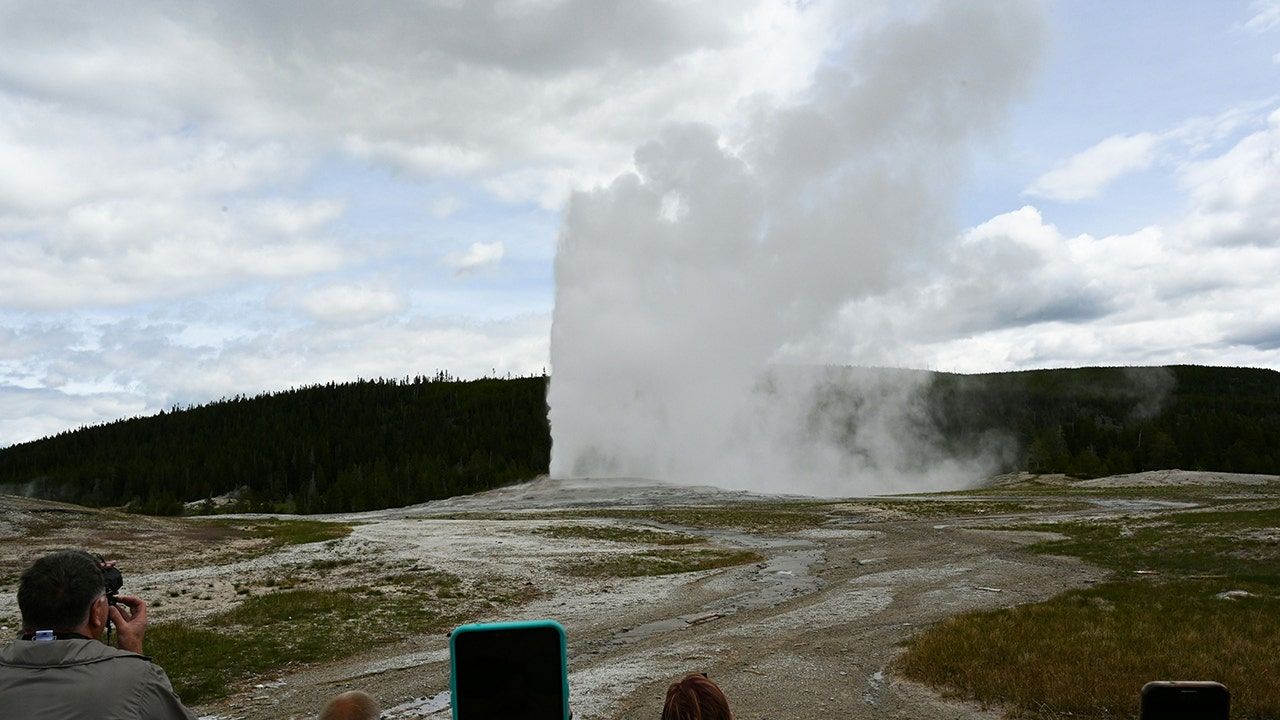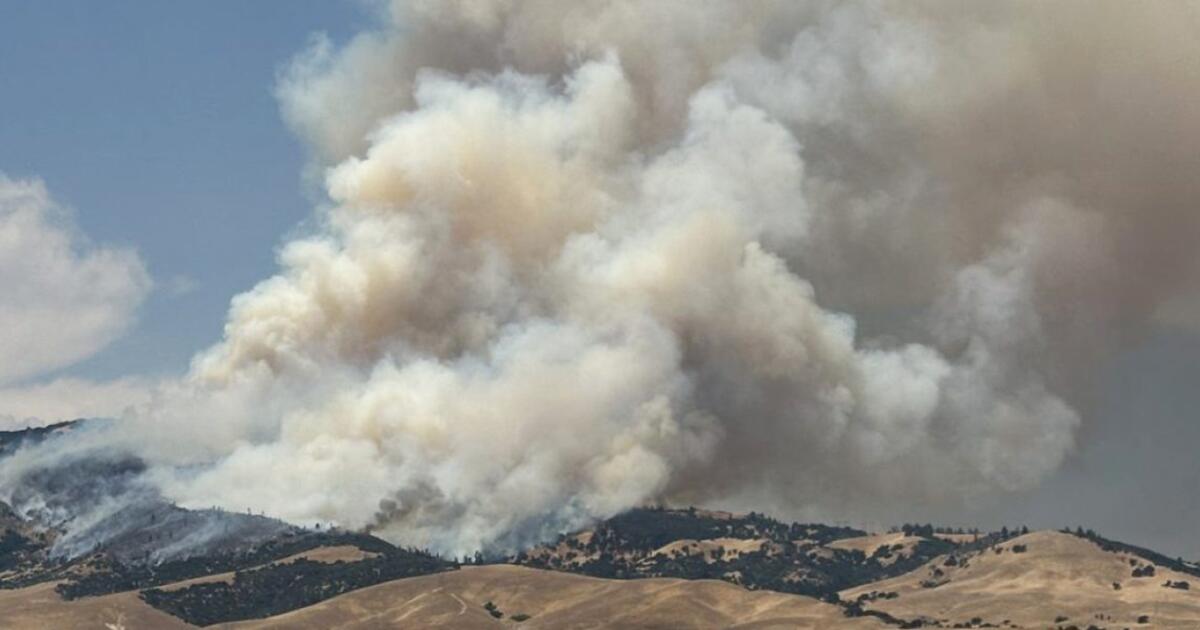Old Faithful Geyser was first documented and named on this day in history, September 18, 1870, by explorer Nathanial Langford.
Langford, who was exploring Yellowstone Park as part of the Washburn-Doane-Langford Expedition, wrote in his journal that he had seen a geyser that erupted quite frequently.
“During our stay, water gushed forth at regular intervals nine times; columns of boiling water were thrown from 90 to 125 feet at each discharge, lasting from 15 to 20 minutes,” Langford wrote.
ON THIS DAY IN HISTORY, SEPTEMBER 17, 1937, THE ABRAHAM LINCOLN CARVING ON MOUNT RUSHMORE IS OFFICIALLY DEDICATED
“We named it 'Old Faithful,'” he wrote.
A year later, in 1871, Old Faithful was rediscovered and documented by geologist Ferdinand V. Hayden, the U.S. Geological Survey website notes.
Old Faithful was first documented and named on this day in history, September 18, 1870. The photos here show the geyser erupting in 1871. (WH Jackson/New-York Historical Society/Getty Images)
Hayden, who led the 1871 geological survey that led to the establishment of Yellowstone as a national park, wrote that “This geyser was named for Mr. N.P. Langford and maintains well the reputation given it by the Doane and Washburn expedition of 1870. It has been called the Guardian of the Valley.”
He added: “Their operations are so regular and occur with such frequency that they have provided unusual facilities for observation.”
ON THIS DAY IN HISTORY, MARCH 1, 1872, MAJESTIC YELLOWSTONE BECOMES AMERICA'S FIRST NATIONAL PARK
Old Faithful, in northwestern Wyoming, remains a popular tourist attraction in the century and a half since it was discovered.
It receives about 4 million visitors each year, the National Park Service said.
It is located in the Upper Geyser Basin in the southwestern section of Yellowstone, the National Park Service website says.

According to the National Park Service, about 4 million people visit Old Faithful in Wyoming each year. The geyser erupts about every 90 minutes. (George Frey/Getty Images)
“The geyser viewing area is the most accessible and visitor-friendly in the park, with bench seating, ample parking, and a beautiful visitor center that tracks the time, height, and duration of an eruption to predict the next eruption,” the National Park Service says.
True to its name, Old Faithful erupts on a semi-regular schedule every day.
After each eruption, staff get to work predicting the next time Old Faithful Volcano will erupt.
Each eruption lasts between 90 seconds and five minutes, the National Park Service said, and water can reach as high as 180 feet (55 meters) in the air.
After each eruption, staff get to work predicting the next time Old Faithful Volcano will erupt.
“These eruptions are predicted with a 90% confidence level, within 10 minutes, based on the duration and height of the previous eruption,” the National Park Service said.

Water can reach a height of up to 180 feet during Old Faithful eruptions. (DANIEL SLIM/AFP via Getty Images)
“This is done by good old-fashioned observation, timing with a stopwatch and writing in a log book,” the Park Service added.
For more lifestyle articles, visit www.foxnews/lifestyle
Currently, Old Faithful erupts every 44 to 125 minutes, with an average interval of 74 minutes, the National Park Service says.
This equates to about 20 eruptions per day.
CLICK HERE TO SUBSCRIBE TO OUR LIFESTYLE NEWSLETTER
And while Old Faithful has slowed down since its discovery, that's something tourists don't need to worry about, experts say.
“Before the 1959 earthquake, Old Faithful erupted 21 times a day,” the National Park Service said.
CLICK HERE TO GET THE FOX NEWS APP
“That's a significant decrease in activity for geologists tracking each eruption, but for visitors seeing one or two eruptions… it looks good,” they said.












